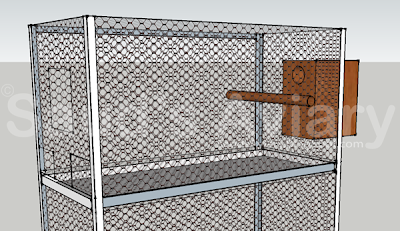Improving Hatchability of Parrot Eggs in Incubators: Tips and Tricks
Breeding parrots is a delicate process, and raising healthy offspring from parrot eggs can be quite challenging. For many breeders, incubating parrot eggs is a common practice. However, the hatchability of parrot eggs can be influenced by many factors, such as temperature, humidity, turning frequency, and ventilation. In this article, we will discuss some tips and tricks that can help improve the hatchability of parrot eggs in incubators.
1. Start with Healthy Parrot Eggs
The first step in ensuring a successful hatch is to start with healthy parrot eggs. This means selecting eggs that are not cracked, discolored, or deformed. It is also essential to ensure that the eggs are not contaminated with bacteria or other harmful microorganisms.
2. Proper Storage
Before incubation, parrot eggs should be stored in a cool, dry place. The ideal temperature for storage is between 55 and 65 degrees Fahrenheit, with a humidity level of 75 to 80 percent. Eggs should be turned several times a day to prevent the yolk from sticking to the shell, which can reduce hatchability.
3. Use a Quality Incubator
When it comes to incubators, quality matters. Invest in a high-quality incubator that is reliable, accurate, and easy to use. The incubator should maintain a consistent temperature and humidity level, and provide adequate ventilation.
4. Monitor Temperature and Humidity
Temperature and humidity are critical factors in parrot egg incubation. The ideal temperature for parrot eggs is between 99 and 101 degrees Fahrenheit, and the humidity level should be around 50 to 60 percent for the first 25 days, and then increased to 70 to 75 percent during the last few days of incubation.
5. Proper Turning
Parrot eggs should be turned at least three times a day during the incubation period. This ensures that the embryo does not stick to the shell, which can cause developmental problems or death. Turning should be done gently and consistently and in the same direction each time.
6. Good Ventilation
Adequate ventilation is necessary for the developing embryo to receive enough oxygen and release carbon dioxide. Poor ventilation can lead to poor hatchability and even death of the developing embryo. Make sure that the incubator has good airflow, and that the ventilation holes are not blocked.
Improving the hatchability of parrot eggs in incubators is a process that requires attention to detail and consistency. Breeders can increase the likelihood of healthy, viable offspring by following these tips and tricks. Always start with healthy parrot eggs, use a high-quality incubator, monitor temperature and humidity, turn the eggs properly, and ensure good ventilation. With a little patience and diligence, successful hatches are within reach.


Hi Saud, WHat has been your experience about number of days the parrot eggs can be stored before Incubation without compromising with hatchability?
ReplyDelete